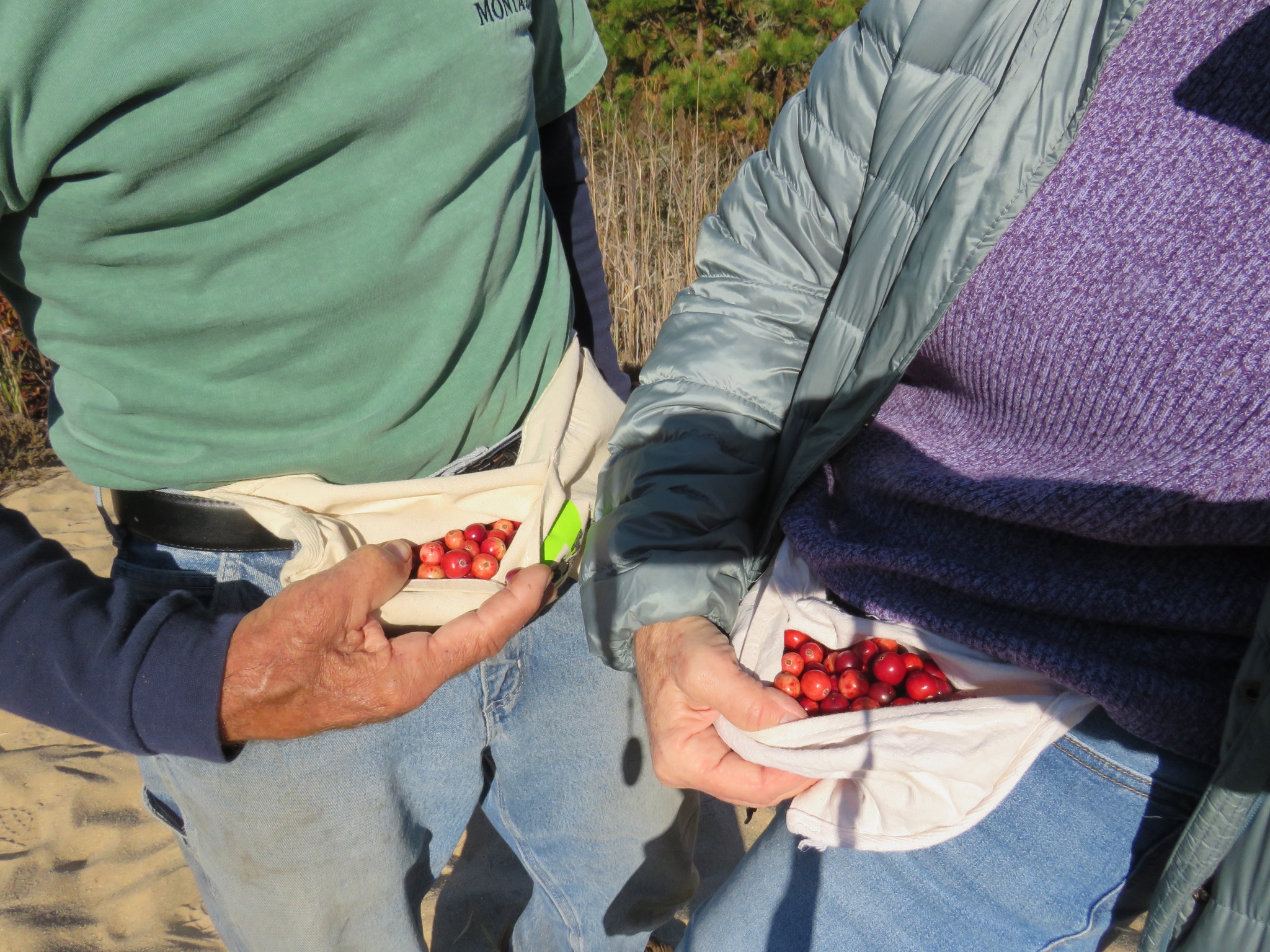
“Cranberries are plentiful at Napeague this year and it is predicted that every dinner table will hold a large dish of tasty cranberry sauce this Thanksgiving,” the East Hampton Star reported brightly in September of 1917.
It was an announcement that could well have been made more than a century later, one of many updates over the decades about the jolly red berries – whether cranberries were “in season and in fashion” and thus featured in recipes “for cocktail, meat sauce, salad, and dessert”( in 1935), “cranberries have been picked and spread on sheets on attic floors, to keep dry and cool with the hope of sugar by Thanksgiving” during shortages (in 1946), or whether “Mr. Petykowski’s grandmother had a particular numbered telephone pole on Montauk Highway just east of Napeague Lane where they would go after the first frost in November” ( in 2010).

Long before colonists arrived in North America, Indigenous Americans harvested cranberries from bogs and marshes, according to a blog of the Smithsonian Libraries and Archives called Unbound. Not only were cranberries used medicinally, but sasemineash, as the Narragansett called them, were mixed with dried fish or meat to make sun-baked cakes which were then eaten on the go as a long-lasting power food.
Of course, cranberries also made a fine accompaniment to the main course, as the English author John Josselyn noted in 1663:
The Indians and English use them … much, boyling them with Sugar for Sauce to eat with their Meate, and it is a delicate sauce, especially for Roast Mutton. Some make tarts with Them as with Goose Berries.
The Unbound blog went on to observe: “In honor of present-day Thanksgiving traditions we will mention that Josselyn also observed ‘pompions” (pumpkin) pie and for the first time in print fully describes the wild turkey.”

It is believed that the colonists came up with the name “cranberry” because the plant’s flower resembled a sandhill crane. Cranberries were also called “bounceberries” because ripe ones tended to bounce if they were spilled.

Napeague has long been a popular source of the berries. “Old-timers still call the bogs north of Cranberry Hole and Bendigo Roads ‘Bellyache Swamp’ because of the sheer number of edible cranberries in the area,” according to a 2010 article in the East Hampton Star. Good spots for picking might be kept a secret or passed along to neighbors, guests, even – like treasured recipes and tools like a cranberry rake or a sieve – through generations.

Cranberries grow as a groundcover with evergreen leaves and delicate pink and white flowers that bloom in June. The berries ripen in the fall. Responsible pickers tread lightly, respect the surrounding habitat, and avoid overharvesting, leaving some fruit for fellow pickers and wildlife.
They may return to productive spots if they recognize a certain telephone pole or a certain color of vegetation. Otherwise, as Mrs. Raymond Medler told Florence Fabricant for an article in the New York Times in 1975, they might recall a particular patch of bog simply “by feel.”
“Don’t ask me to explain exactly where I pick,” Mrs. Medler said, “that would be impossible.”

As the plants grow and spread, they provide shade for sphagnum moss, which can hold water and thus keep the bog moist, creating that “squishy” feeling underfoot, according to The Walking Dunes: East Hampton’s Hidden Treasure.
Squishy or not: Even if your feet are bone dry, it’s not too late to whip up a quick cranberry jelly using the berries you pick (up) at the supermarket.
No time for that? They will still look pretty with any Christmas dinner, or strung festively all around a holiday tree.

Reply or Comment